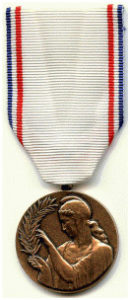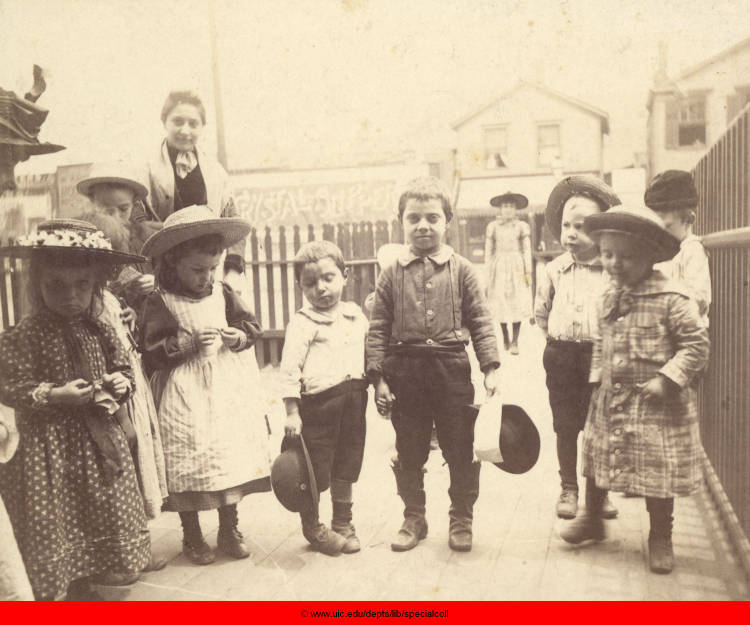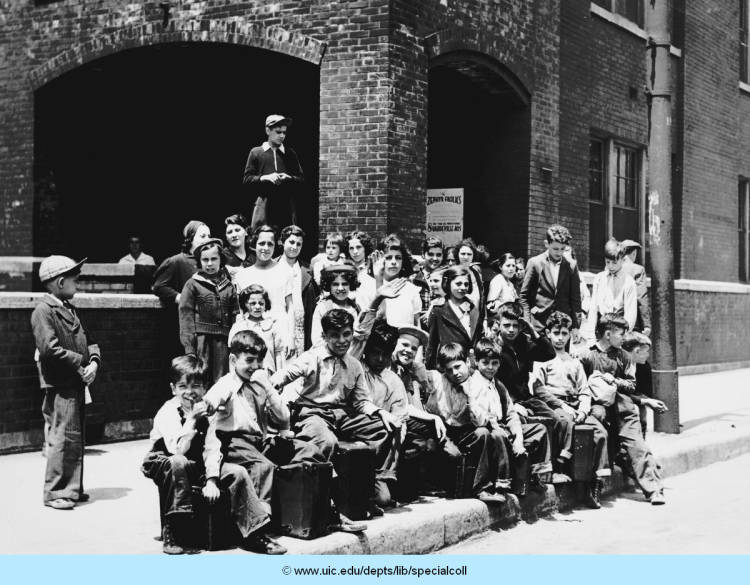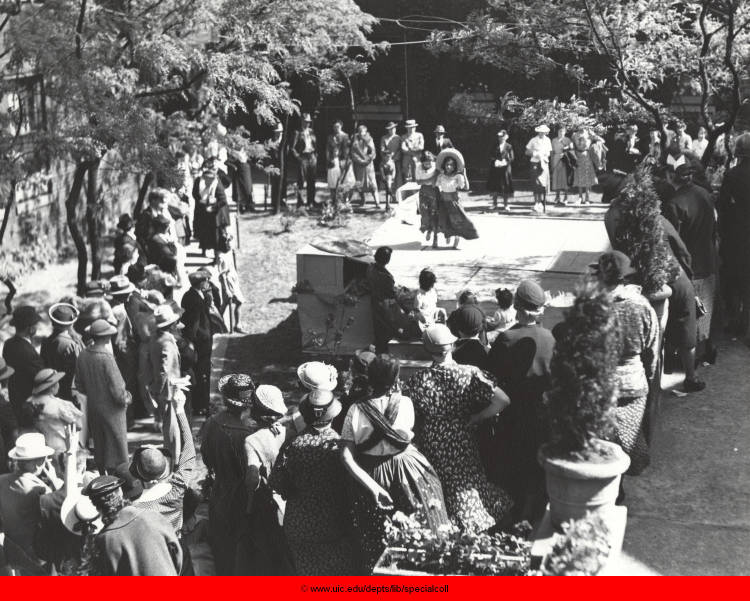
In 1893, an African-American woman with an extraordinary academic background came to live at Hull-House, and she spent a decade of her life in residence at the famous social settlement in Chicago. Her story is not a tale of realizing dreams against all odds. It is not a tale of American exceptionalism, illustrative of the possibilities of equality in a democracy. It is certainly no fairytale. It is, instead, a history of realities. It is a history of human experience informed by the harsh constraints of race and gender in the post-Reconstruction United States. Hull-House was remarkably progressive during the nadir of American race relations, and it provided a space for women to thrive. However, it was not a protective bubble against the prejudices of white America. And the city of Chicago, strictly ordered as it was by race and ethnicity and class, even in many forward-thinking reform organizations, could be cold and bigoted and cruel.
When Harriet Rice, a 27-year-old physician, arrived at Hull-House in the year of Chicago’s great and hopeful Columbian Exposition, she understood it was not going to be easy. She was the first and only African-American resident at the Hull-House settlement, which was located in an impoverished neighborhood of white immigrants, many of whom measured their success and status in juxtaposition with that of African Americans, the city’s lowest caste. Dr. Rice was a smart, ambitious Black woman at a time when society relegated women and people of color to subordinate roles. She knew that a majority of the population in the United States believed Black people were inferior. She knew women had to work harder than their male counterparts to make professional careers for themselves. But she was not looking for easy. She was used to hard work and struggle. She had always chosen challenging paths.
Born in 1866 in Newport, RI, Harriet Alleyne Rice was the daughter of a steamship steward who prospered enough to own a home and to send his children to college. Harriet was a bright and curious girl and a gifted student, and she dreamed of following the career path of an older brother and becoming a doctor. In 1887, she became the first African-American woman to graduate from Wellesley College, and she went straight on to the University of Michigan to join an early cadre of female, Black medical students there. Unfortunately, a health crisis brought on by a debilitating injury derailed her medical studies, but after enduring two operations and a lengthy convalescence, she entered the Woman’s Medical College of the New York Infirmary for Women and Children. After earning her medical degree in 1891, she completed a year of post-graduate training at the prestigious New England Hospital for Women and Children. Dr. Rice was in a special class of African-American women, only one of 115 who held medical degrees by 1896.
When Dr. Rice settled in Chicago, her plan was to practice medicine, and on Sep. 8, 1893, the Illinois State Board of Health issued her a certificate entitling her to practice medicine and surgery in the state. Yet finding work proved difficult. Most hospitals in the United States did not grant privileges to African-American doctors, and Provident Hospital, established in 1891 on Chicago’s South Side, was the only African-American hospital in the city. As well, many white patients rejected medical treatment from Black doctors, and by 1900 there were only 30,150 African-Americans in Chicago and fewer still who could afford to pay for medical visits and treatments. Rice, who was one of only forty-five African-American physicians in Chicago, faced not only racial prejudice but gendered prejudice, as well. Many male physicians at that time barred women physicians from hospitals, and gender discrimination in all areas of the medical profession was commonplace.
We can only speculate about Rice’s hopes and dreams for herself in Chicago, and the particulars of her decision to live at Hull-House are unknown. But it is likely that Hull-House offered a refuge and an agreeable and affordable housing option. For Black Chicagoans housing was expensive and limited, confined almost exclusively to the city’s “Black Belt,” and much of the housing available to the city’s Black residents was inferior in condition and inconveniently located. There was a growing middle-class in Chicago and a prosperous Black community, but Rice was not possessed of standing and wealth when she arrived in the city seeking to build a better life for herself. When she moved into Hull-House, she might have already been feeling discouraged about her prospects, despite the fact that Jane Addams wanted her to join the settlement and might have even recruited her. Other residents were supportive of Rice, too. Mary Rozet Smith funded a fellowship with a small stipend for her. Florence Kelley shared a room with her at the settlement and, no doubt, offered her advice. And Julia Lathrop helped Rice make contacts in Chicago and counseled her when her medical practice floundered.
At first, Rice settled in comfortably and made friends. Madeleine Wallin, who was also a new resident, found Rice “one of the most lady-like and unobjectionable people” at the settlement. Jane Addams assigned Rice to help establish a medical clinic and dispensary at Hull-House, and when the leading physician, a white woman, left the settlement, Addams was hopeful that Rice would assume responsibility for the operation. However, Rice was either uninterested in dispensing medical care to the poor or, more likely, she was unwilling to accept poor treatment by Hull-House’s clientele of white immigrants, many of whom likely mistrusted the young Black doctor. Black Chicagoans would have been accepting of Dr. Rice, but most of the city’s Black residents lived too far from Hull-House to make use of the dispensary or other of the settlements programs and services.
In January 1895, Addams wrote to Mary Smith: “Dr Rice has an awful cold which has hung on for weeks and is perfectly miserable, she is also desperate about her financial situation, she has no practice save the Jane Club and H. H. Sister Lathrop has taken her life in her hand and is trying to induce her to go to the colored hospital. She said that I might find her in fragments upon my return.”
The following month, Addams updated Smith again: “I forgot to mention Dr Rice in my long screed this morning. She has a wretched cold—has lost her voice for weeks and is altogether doing miserably. I do not know what do for her or about her. She is still working on the library but by the time she pays her room rent and her coal probably does not eat enough. She has not the settlement spirit (if there is such a thing) and makes Miss [Annie] Fryar and indeed the rest of us, indignant by her utter refusal to do anything for the sick neighbors even when they are old friends of the House. I am constantly perplexed about her.”
And later in the month, Addams wrote: “Dr Rice’s cold is no better but she is much more human and charming.”
Rice struggled to establish a private medical practice, and she was struggling to find purpose at the settlement, too. Addams arranged for a $25 monthly stipend for Rice to work in the Hull-House branch of the Chicago Public Library, and then Rice ran the Hull-House Dispensary until it closed in June 1896. After that she took a short-term, paid position for the Illinois Board of Charities to organize records of Cook County’s public institutions serving the poor. From 1897-1898, Rice was the only doctor at the Chicago Maternity Hospital and Training School for Nursery Maids.
Jane Addams may have been right. Perhaps Rice did not have the “settlement spirit,” certainly other residents of Hull-House over the years failed to find the spirit in their own hearts. In Rice’s defense, however, she possessed the skills and education to be a physician, and she wanted to be a physician. Running a dispensary for the poor did not fully utilize her talents, and it is easy to imagine the racial hostility she experienced in that role. Addams liked Rice and felt empathy for her financial difficulties and ill health, but whereas she could accuse Rice of lacking the “settlement spirit,” Addams herself seemed to have lacked the spirit of sympathy for the frustrations Rice experienced. Addams likely believed that having Rice at the settlement was evidence of her own open-mindedness and racial equality at Hull-House. However, she either ignored or failed to fully understand Rice’s unique challenges from the standpoint of race. Hull-House was a safe environment for women, but in the early decades the settlement was probably not always a safe environment for a woman of color.
The truth of the matter is clear. Race and racism played a significant role in the experience of African-Americans, and Rice was not immune. Though she had the mental capacity and the training for a lucrative career in medicine, the color of her skin had more bearing on her chances for professional and financial success than did her preparedness for medical work. As a result, since arriving in Chicago, Rice had had to worry about money. All Hull-House residents were required to contribute to the settlement, to have a purpose, to pull their weight. They were also required to cover their expenses, although Hull-House was an affordable housing option for most of its residents. Rice’s attempt to establish a private medical practice was failing, and she was having difficulty making ends meet.
She also suffered poor physical health, perhaps exacerbated by the stress of persistent discrimination. In 1899, an unknown illness became serious enough that she moved back home to Newport to have another surgery and endure another long convalescence. There is no record of how Jane Addams or any of the other residents felt about Rice’s departure. However, when she returned to Chicago in 1901, she went back to Hull-House.
In July 1901, Jane Addams wrote Mary Smith: “The Bureau of Charities has absolutely no money and we have been more of a relief bureau than any thing else — but — [though] relief was needed Dr Rice is most amiable and charming and likes the work.”
Jane Addams still wanted Rice at Hull-House and, perhaps, felt an obligation to her. In 1902, Rice took a flat in the new apartment building at Hull-House, her salary as postmistress at the settlement’s Post Office allowing her to afford the flat and take her meals in the settlement’s Coffee House. From 1902-1904, Rice’s circumstances were secure, but perhaps she was restless or disappointed that a career in medicine was eluding her. After serving briefly as the Hull-House cashier, Rice left the settlement for good in 1904. If she kept in touch with Addams in the early years after her departure, no correspondence survives to document it. If she had hard feelings for the settlement, we cannot know, although later evidence suggests that Rice did not look upon her years in Chicago as successful, nor particularly pleasant ones.

We don’t know much about what happened to Rice after she left Hull-House, but there is evidence she continued to be restless. In 1910 she was an assistant in a Boston dispensary’s pathology laboratory, and sometime after that moved to France to live with her brother. She was in Europe when war broke out, and she was one of two African-American women who served in WWI, finally getting a real chance to practice medicine. Rice worked in a French military hospital for most of the war. In 1919, she was awarded the bronze medal of French gratitude, the Reconnaissance Française, for her meritorious medical service. Her WWI years were “happy years,” perhaps the most professionally fulfilling years of her life, years that proved to herself and illustrate for the historical record Dr. Rice’s capacity to be an skilled physician.
After the war, Rice returned home to Newport, where she lived with her sister, and she made another attempt at private medical practice. She also returned to the same old discriminatory circumstances she had faced in the past. When her sister died in 1925, Rice wrote to Wellesley classmates to share the bad news and some of her personal disappointments, as well. “I’m a lonely wonderer on the face of earth, without friends, without home, or settled employment of any kind,” she wrote. She was 61 years old and feeling lost. She was also, she added, “looking forward without hope, and backward only, with regret.”
In December 1928, when she was living in Boston, Rice wrote to Jane Addams, and her letter is a heartbreaking illustration of her sorrows. Having read in the newspaper that Addams had been in town for a lecture, she wrote: “I do wish I might have seen you. I should have been so glad to see you once more—although I hardly imagine that you would have been the least glad to see me. I’ve never forgotten once hearing a southern doctor tell about seeing again his old “colored Mammy” and how glad she was to see him; but on his side there seemed to be nothing.”
That sentence of the letter is replete with bitterness, but there is some tenderness in the letter, as well. Rice alluded to a less than amiable final departure from Hull-House, but she was hopeful that the years had softened any hurt there may have been between her and Addams, and also between her and Mary Rozet Smith, who had sponsored her residency at Hull-House all those years ago. “So,” Rice concluded, “please do let me wish yourself, and Miss Mary and Miss Eleanor [Smith] all the best wishes of the Christmas tide—health and good cheer and all the happiness possible in this dreadful world.”
Despite her accomplishments, which were unique and impressive, Rice saw the world through the lens of disappointment. The “dreadful” world had been for her, in large part, cold and bigoted and cruel. The character of race was a living, breathing entity, shaping her life and drawing her experiences; and it is hard to blame her for feeling frustrated and wounded. As for Jane Addams, it is impossible to know what she would have said to Rice to counter her negative narrative or to console her. If she replied to Rice, the letter is lost. But I suspect Addams, who was usually keen to reconnect and keep in touch with previous Hull-House residents, would have taken the time to see her old colleague in Boston had Rice requested a meeting when she was in town.
Between 1928 and 1933, Rice worked in Philadelphia and later in New York City, where she found employment in a laboratory at the Columbia Medical Center. Apparently, her financial circumstances were often precarious in those years. In June 1933, she wrote Mary Rozet Smith for help. In America’s Great Depression, her position at Columbia was in jeopardy. She hated to beg for work, but she had no choice. “This is a man’s world and they won’t let a woman get farther than they can help—or hinder.”
In 1935, Rice received a questionnaire sent to Wellesley graduates. Many of the questions pertained to marriage and family and did not pertain to her, but one of the questions provoked a passionate response. To the question “Have you any handicap, physical or other, which has been a determining factor of in your activity,” she wrote: “Yes! I’m colored which is worse than any crime in this God blessed Christian Country!”
Racial prejudice and discrimination had not subsided in the 1930s. Jim Crow still reigned in the South, “Sundown Towns” restricted the movements of African Americans in the Midwest, and most northern cities were increasingly segregated. There is little evidence of Rice’s later years, but at some point she settled in West Somerville, MA, outside of Boston to live in retirement. She was living there when she died at the age of 92 on May 24, 1958. Although she faced unimaginable difficulties, she had accomplished much in her long life, including a few historical firsts as an African-American woman. Before she died, I hope she gave herself the credit she deserved for reaching beyond what the society in which she lived proscribed for her. I suspect at the end of her life, however, she was still disappointed about the ways in which her country failed her. And it makes me angry that in death she suffered one final indignity, being buried in a public cemetery in her hometown of Newport in the area designated for African Americans.
I was born exactly 100 years after Dr. Rice, and I wish I could tell her things are different now. And they are different; and, in many ways, they are better. There are far fewer obstacles today for bright and curious little girls like Harriet had been, and Black women have greater access to college and professional careers than those who lived in the nineteenth and twentieth centuries. Still, I suspect, Rice would be disappointed to learn that only 36 percent of doctors today are women, and less than 3 percent are Black women.
By Stacy Lynn,
Associate Editor
Sources: Allan H. Spear, Black Chicago: The Making of a Negro Ghetto, 1890-1920 (Chicago: University of Chicago Press, 1967), 3-15, 23-30, 57, 97, 103; Irving Cutler, Chicago: Metropolis of the Mid-Continent, 4th ed. (Carbondale: Southern Illinois University Press, 2006), 156-60; Linda Gordon, “Black and White Visions of Welfare: Women’s Welfare Activism, 1890-1945,” in Vicki L. Ruiz and Ellen Carol Dubois, eds., Unequal Sisters: A Multicultural Reader in U.S. Women’s History, 3rd ed. (New York: Routledge, 2000), 214-41; Rayford Whittingham Logan, The Negro in American Life and Thought: The Nadir, 1877-1901 (New York: Dial Press, 1954); Rima Lunin Schultz and Adele Hast, eds., Women Building Chicago, 1790-1990: A Biographical Dictionary (Bloomington: Indiana University Press, 2001), 740-42; Louise W. Knight, Citizen: Jane Addams and the Struggle for Democracy (Chicago: University of Chicago Press, 2005), 387-88; Ann Oakley, Women, Peace and Welfare: A Suppressed History of Social Reform, 1880-1920 (Chicago: Policy Press, c/o University of Chicago, 2018), 53; Allan H. Spear, Black Chicago: The Making of a Negro Ghetto, 1890-1920 (Chicago: University of Chicago Press, 1967), 12, 14; Kimberly Jensen, “Uncle Sam’s Loyal Nieces: American Medical Women, Citizenship, and War Service in World War I,” Bulletin of the History of Medicine, 67 (Winter 1993): 680; “African Americans,” Encyclopedia of Chicago; Florence Kelley to Nicholas Kelley, June 29, 1902, transcribed in Kathryn Kish Sklar and Beverly Wilson Palmer, eds., The Selected Letters of Florence Kelley, 1869-1931 (Urbana: University of Illinois Press, 2009), 113; 1910 U.S. Federal Census; 1920 U.S. Federal Census; Maria Aspan, “Black Women Account for Less than 3% of U.S. Doctors,” Fortune, Aug. 9, 2020; “New Physicians for Illinois,” Chicago Tribune, Sep. 9, 1893, p. 4; “George Addison Rice,” Fall River (MA) Evening News, Mar. 10, 1894, p. 4; “New England News in Tabloid Form,” Newport (RI) Mercury, Sep. 24, 1921, p. 5; “Dr. Harriet Rice, 92, Native of Newport,” Newport (RI) Daily News, May 27, 1958, p. 2; Selected Papers of Jane Addams (Urbana: University of Illinois Press, 2019), 3:233n2, 3:241, 3:270n24, 3:454n6; 415n21; Jane Addams to Mary Rozet Smith, Jan. 15, 1895, in Selected Papers of Jane Addams, 3:411; Jane Addams to Mary Rozet Smith, Feb. 3, 1895, Jane Addams Papers Microfilm (JAPM) 2:1656-58; Jane Addams to Mary Rozet Smith, Feb. 24, 1895, JAPM, 2:1673; Harriet Rice to Jane Addams, Dec. 7, 1928, JAPM, 20:608; Jane Addams to Mary Rozet Smith, July 19, 1901; Harriet A. Rice to Anita McCormick Blaine, Aug. 31, 1904, both in Jane Addams Digital Edition.
A scholarly editor and historian, Stacy Lynn formerly edited the papers of Abraham Lincoln and currently is an editor at the Jane Addams Papers Project.

















